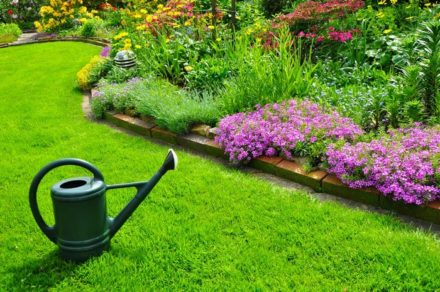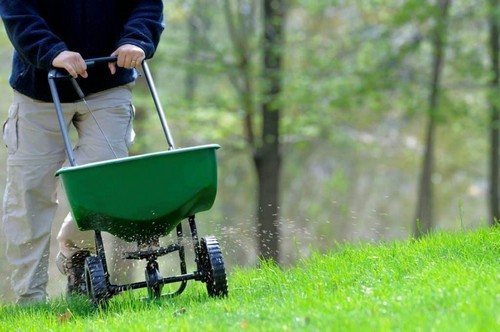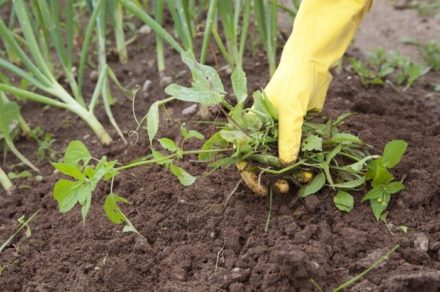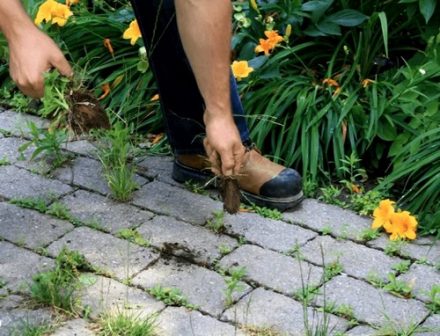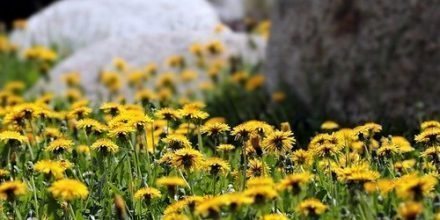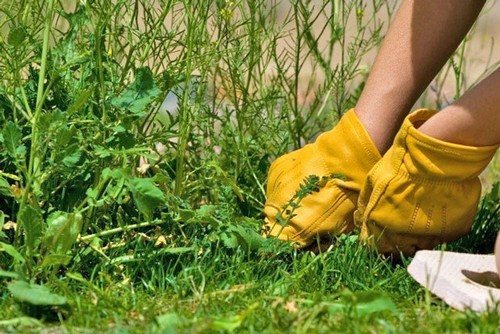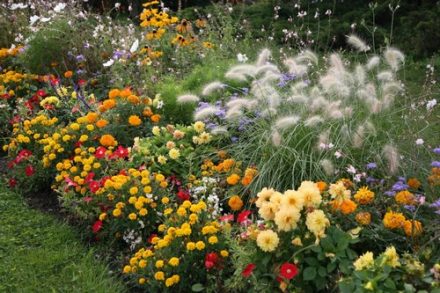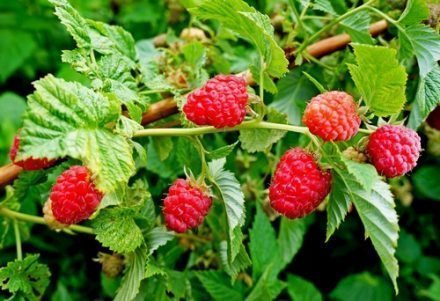Weeds on the lawn are a real headache for the owner. They spoil the appearance and integrity of the grass cover, inhibit the development of cultivated grasses and plantings. It is necessary to pay due attention in the fight against this phenomenon and find the optimal solution to eliminate the problem.
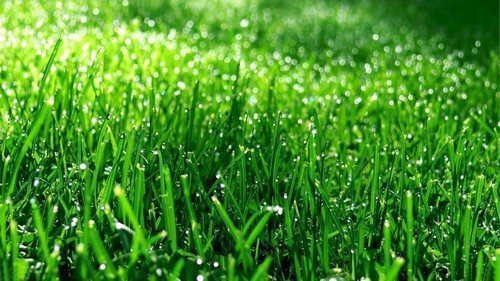
Mechanical method
Manual weed removal is a labor-intensive but effective task. The easiest way is regular weeding with a garden fork or hoe. After this treatment, damaged areas remain. The place needs to be compacted and watered. It is good to sow seeds identical to the general vegetation.
You need to remove weeds by hand after heavy rain, when the soil is sufficiently moist and soft. The root should slide out of the soil completely. If the weather is dry, the lawn is watered using artificial irrigation.
It is important to eliminate the root of the weed. Even the smallest part of the plant that remains will soon begin to send out young shoots and after a short period of time will appear on the lawn again.
Perennial weeds, such as plantain, nettle, sow thistle, buttercup, and dandelion, have a powerful root system, so it is important to carefully and regularly monitor the condition of the grass cover.
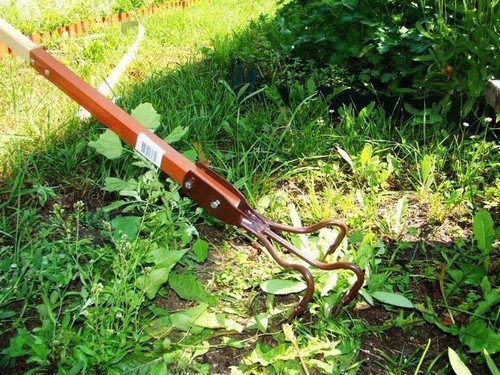
Regular haircut
If the grass on the lawn has grown to 10 cm, it needs to be trimmed. Regular mowing prevents weeds from developing, weakening and removing them.
Over time, malignant vegetation becomes depleted and stops expending energy on renewal.This method is used when the lawn is slightly infested with weeds.

Watering and fertilizing
To prevent the plantings from starting to turn yellow and dry out, it is important to water and fertilize them on time. Dense and elastic plant cover will not allow weeds to break through and settle in the lawn.
If a single weed is detected, you must carefully remove the plant, preventing the seeds from ripening.
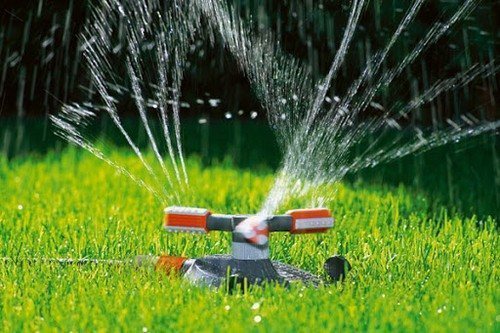
Chemicals
In the fight against weeds, special preparations - herbicides - are widely used. They suppress unwanted vegetation, weakening and eliminating it from the territory of cultural plantings.
It is preferable to treat the area before planting the lawn. For such treatment it is better to use continuous action herbicides.
Controlling weeds in a seeded lawn is more difficult. When choosing a herbicide, it is preferable to use a product with a selective mechanism. This product removes weeds without damaging the lawn grass.
It is necessary to work with chemicals in dry, warm, windless weather, having previously studied the instructions and properties of the drug.
It is important to use the product on a strong and mature lawn, excluding the use of the drug on a young lawn.
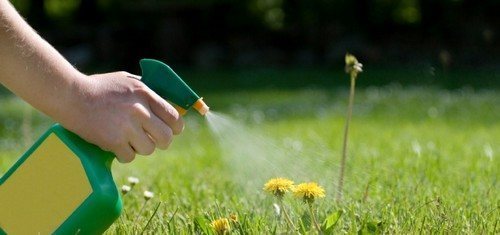
Folk remedies
Compared to chemicals, traditional methods are safe for the soil. The disadvantage is that some types of weeds adapt, so the formulation and composition of the products must be changed regularly.
Effective solutions will be products based on vinegar, laundry soap and soda.
For 1 liter of vinegar (15 or 20%) add 150 g of salt and 5 ml of detergent.The solution is sprayed onto areas damaged by weeds in dry sunny weather.
Dilute 2 tbsp in 5 liters of water. spoons of soda and add 20 g of grated laundry soap to the solution. This mixture not only fights weeds, but also eliminates many fungal diseases.
The vinegar solution is mixed with water in a 1:1 ratio. Then add a packet of citric acid (20–25 g) and 30 g of alcohol. The mixture dries out unwanted vegetation, eradicating it from the lawn.
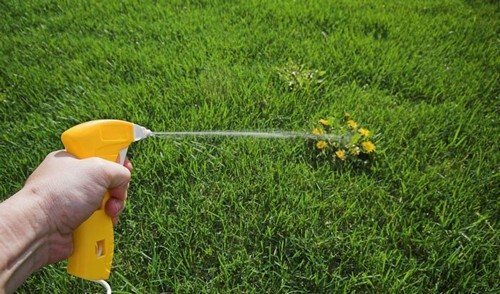
Blackout
It is vital for plants to receive enough light. If you limit the amount of sunlight, the weeds weaken and stop growing.
The area with weeds is covered with darkened material and sprinkled with earth. Plants deprived of light quickly die.
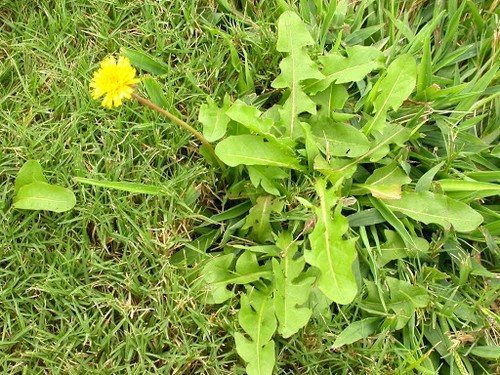
One of the main enemies of a gardener is weeds. It takes a lot of effort and patience to fight them. Plants have vitality and endurance, they are able to suppress the growth of most cultivated crops.
Weeds deteriorate the condition of the soil, the quality of crops and cause insects. Therefore, it is necessary to get rid of them in time.
But there is also a positive side to the appearance of such vegetation. Weeds are an indicator of soil condition. So, wheatgrass and woodlice love slightly acidic soil, and plantain grows on dense and heavy soil. Wormwood prefers dry soil, while buttercup prefers moist soil.
By determining what vegetation appears on the site, you can assess the condition of the soil and take appropriate improvement measures.


